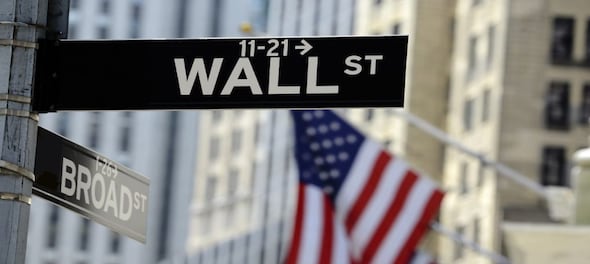
Stocks saw their biggest decline on a Federal Reserve day since last March after Jerome Powell said officials want to keep their options open instead of rushing to cut interest rates.
Speaking after the Fed decision, Powell said he doesn’t think it’s likely the central bank will ease policy in March 2024. In a sign that officials are not in a hurry to lower rates, the central bank also said it “does not expect it will be appropriate to reduce the target range until it has gained greater confidence that inflation is moving sustainably toward 2%.”
“If stock bulls expected a rate cut in March, Powell seems to have closed the door on that,” said Oscar Munoz at TD Securities.
The S&P 500 fell 1.6%, the most since September. Microsoft Corp. and Alphabet Inc. slumped after disappointing investors betting that an artificial-intelligence bonanza would quickly fuel results. After the close, Qualcomm Inc. warned that some customers are still working through gluts of chip inventory even as the industry begins to recover.
Treasuries rose as fresh concerns about regional lenders added to economic worries after New York Community Bancorp’s surprise loss.
Data Wednesday showed a broad gauge of US labor costs cooled by more than forecast in a fresh sign of easing inflation pressures that give Fed officials room to cut interest rates this year. A separate report from the ADP Research Institute showed companies added a smaller-than-expected 107,000 jobs in January, and worker pay growth slowed.
The market has been too quick to dismiss the threat posed by inflation after a “miraculous” decline toward central bank targets, said Greg Peters at PGIM Fixed Income. He’s worried that the hardest part of the fight against inflation is still ahead, implying plenty more market volatility and a potential wake-up call for bondholders betting on deep interest-rate cuts this year.
Despite Wednesday’s losses, the S&P 500 capped its third straight monthly advance.
As goes January, so goes the year. That’s the theory of a phenomenon known as the “January Barometer” — Wall Street folklore positing that if stocks rise in January, they’ll be poised to finish the year higher, and vice versa. Since 1938, the January Barometer has been right about 74% of the time, with the next 11 months higher 67% of the time, according to the Stock Trader’s Almanac.
One of Wall Street’s most prominent bears is now expecting gains in the US equity market to broaden into less loved corners than the big tech companies that have dominated the rally so far.
Morgan Stanley’s Mike Wilson, who stuck with his prediction of a stock market decline last year while the S&P 500 Index surged 24%, sees opportunities in names outside the so-called Magnificent 7 companies that have powered equity gains through much of 2023. He’s urging investors to buy high-quality, growth names that can generate pricing power.
“In the stock world, I think once again, it’s going to be idiosyncratic — I don’t think it’s going to be as narrow as last year,” Wilson said Tuesday afternoon at the iConnections Global Alts conference in Miami Beach. “The big index is full, it’s priced. For all intents and purposes, the value is not there. The value is underneath the market.”
Meantime, the US Treasury boosted the size of its quarterly issuance of longer-term debt for a third straight time, and suggested that no more increases are likely until next year. Relief from further boosts to auction sizes for longer-term securities may help support demand for Treasuries. Investors for several months now have been particularly sensitive to news on the overall supply of federal debt, at a time when the Fed has been steadily shrinking its own holdings of US securities.
First Published: Feb 1, 2024 4:55 AM IST
Check out our in-depth Market Coverage, Business News & get real-time Stock Market Updates on CNBC-TV18. Also, Watch our channels CNBC-TV18, CNBC Awaaz and CNBC Bajar Live on-the-go!


'Rahul Gandhi deserted Amethi due to fear of Smriti Irani': How BJP plans to puncture Congress' UP plan
May 3, 2024 1:12 PM
'Don't be scared, don't run away', PM Modi tells Rahul for not contesting from Amethi
May 3, 2024 1:06 PM

